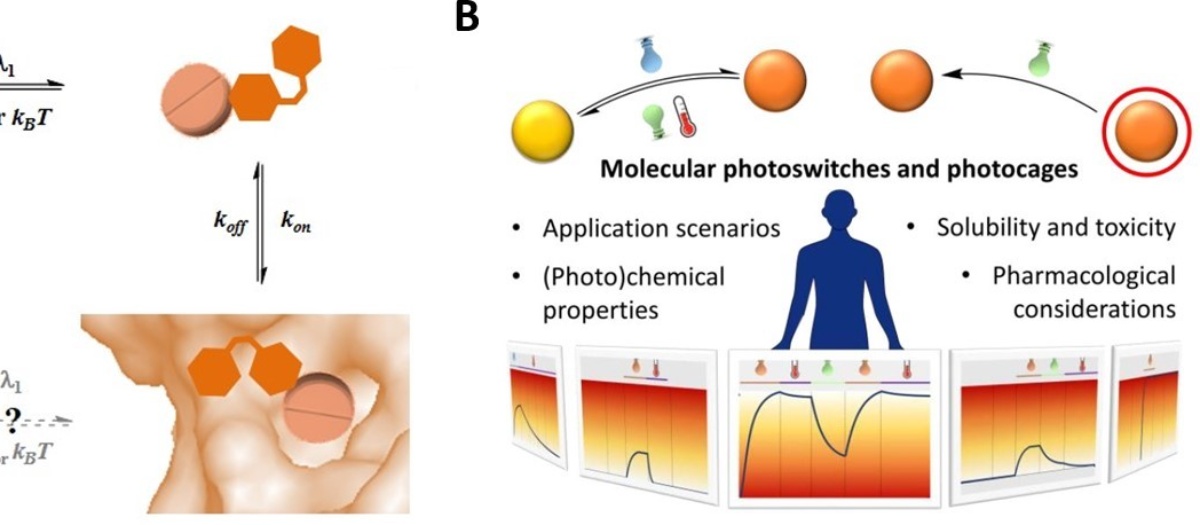
Molecular photomedicine holds the promise for precise treatments, which avoid systemic adverse effects and development of drug resistance. This promise is supported by current medical imaging modalities that are able to reveal the nature and location of malignancies, such as cancer and infections. At the same time, biomedical engineering has recently created methods to deliver light deep into human body. The photomedicine puzzle is currently missing its final piece – the way of translating light into a therapy. To address this challenge, drugs could be introduced whose activity could be reversibly or irreversibly turned on with light. The aim of this presentation is to describe the emerging concept of photopharmacology (Figure A),[1] which is currently being developed and applied to precisely control the activity of drugs using light. The presentation will focus on our efforts towards bridging light and medicine, focusing first on new light-operated tools[2] (molecular photoswitches[3,4] and photocages[5,6], Figure B). Next, I will highlight the synergies between medical imaging and therapy, offered by light, through photo-responsive optical[7] and magnetic resonance[8] imaging agents. The examples of light-controlled bioactive molecules presented will include small molecules[9,10] and proteins[11]. Finally, using those examples, I will highlight the structural aspects[12] of photopharmacology.
Figure. The principle of photopharmacology (A) and its key molecular tools (B)
[1] Hoorens, M. W. H. et al. (2018) Trends. Biochem. Sci. 43, 567-575; [2] Welleman, I. M. et al. (2020) Chem. Sci. 11, 11672-11691; [3] Lameijer, L. N. et al. (2020) Angew. Chem. Int. Ed. 59, 21663-21670; [4] Hoorens, M. W. H. et al. (2019) Nature Comm. 10, 2390; [5] Schulte, A. M. et al. (2022) J. Am. Chem. Soc. 144, 12421-12430; [6] Alachouzos, G. A. et al. (2022) Angew. Chem. Int. Ed. 61, e202201308; [7] Reeßing, F. et al. (2020) ACS Omega 5, 22071-22080; [8] Reeßing, F. et al. (2019) ChemComm 55, 10784-10787; [9] Hoorens, M. et al. (2019) Eur. J. Med. Chem. 179, 133-146; [10] Kolarski, D. et al. (2021) Nature Comm. 21, 3164; [11] Mutter, N. et al. (2019) J. Am. Chem. Soc. 141, 14356-14363; [12] Arkhipova, V. et al. (2021) J. Am. Chem. Soc. 143, 1513–1520;
Acknowledgements: The financial support of the Dutch Scientific Organization (NWO VIDI grant 723.014.001 and ECHO grant 711.017.012) is gratefully acknowledged.
